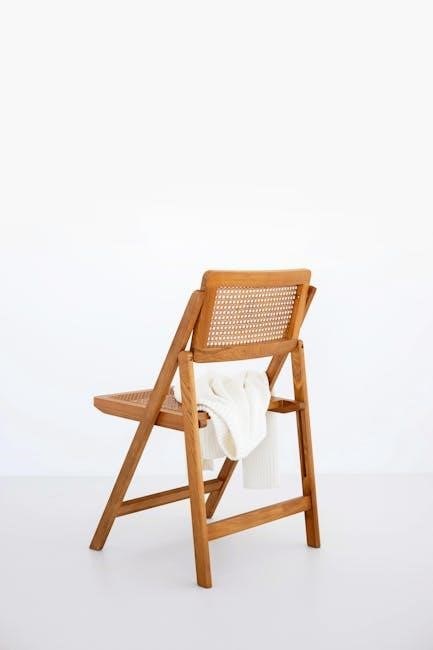hy-line brown management guide pdf

Hy-Line Brown Management Guide
The Hy-Line Brown Management Guide outlines successful flock management programs, compiled from extensive field experience and a vast commercial layer flock database. These guides are periodically updated to reflect the latest performance data and nutritional information, ensuring optimal poultry husbandry practices.
The Hy-Line Brown is a prolific layer known for producing high-quality, dark brown eggs. Developed by Hy-Line International, a company with over 80 years of experience in poultry genetics, this breed is designed for optimal performance under various management systems. Hy-Line geneticists developed the world’s first hybrid egg-laying chicken produced on a commercial scale.
This breed’s genetic potential can only be fully realized through diligent poultry husbandry and appropriate management practices. Hy-Line Brown chicks adapt well to both floor and cage brooding systems, requiring standard hatchery services such as Marek’s disease vaccination.
The Hy-Line Brown exhibits excellent livability during the rearing and laying periods. It is capable of achieving high peak production rates. The management guide provides guidelines for maximizing performance, including key performance standards and nutrition guidelines. These standards cover aspects such as mortality rates, feed intake, body weight, egg production, and egg quality.
Hy-Line International periodically updates its management guides to incorporate new performance data and nutritional information. This ensures that producers have access to the most current and effective strategies for managing their Hy-Line Brown flocks.
Rearing Period Management (Up to 17 Weeks)
The rearing period, spanning from day-old chicks to 17 weeks of age, is crucial for the development of healthy and productive Hy-Line Brown layers. Effective management during this phase sets the foundation for optimal performance during the laying period. Key aspects of rearing period management include maintaining optimal environmental conditions, providing appropriate nutrition, and implementing effective disease prevention strategies.
During brooding, chicks require a warm and draft-free environment. Adequate ventilation is essential to maintain air quality. As the chicks grow, temperature should be gradually reduced to encourage feather development and acclimatization to cooler temperatures.
Nutritional requirements during the rearing period vary with age and growth stage. Chicks should receive a high-quality starter feed, followed by grower and developer feeds to support skeletal and muscle development. Feed intake should be monitored regularly to ensure that birds are meeting their nutritional needs.
Vaccination programs are essential for protecting chicks against common poultry diseases. Biosecurity measures, such as limiting visitor access and maintaining clean facilities, are crucial for preventing disease outbreaks. Regular monitoring of chick health and prompt treatment of any illnesses are also important for minimizing mortality and maximizing growth. The target is to reach the appropriate body weight at 17 weeks.
Laying Period Management (Up to 90 Weeks)

The laying period, extending up to 90 weeks, represents the peak production phase for Hy-Line Brown hens. Effective management during this period is crucial for maximizing egg production, maintaining egg quality, and ensuring hen health and welfare. Key elements of laying period management include providing a balanced diet, maintaining optimal environmental conditions, and implementing effective disease control measures.
Nutritional requirements during the laying period are high, as hens need sufficient nutrients to support egg production. A well-formulated layer feed should provide adequate levels of protein, energy, calcium, phosphorus, and vitamins. Feed intake should be adjusted based on egg production levels and environmental conditions. Supplemental calcium may be needed to maintain eggshell quality.
Maintaining optimal environmental conditions is essential for maximizing egg production. Adequate ventilation is crucial for removing excess moisture and ammonia. Lighting programs should be carefully managed to stimulate egg production.
Regular monitoring of hen health is essential for detecting and addressing any health problems promptly. Vaccination programs should be continued to protect hens against common poultry diseases. Biosecurity measures should be maintained to prevent disease outbreaks. Effective parasite control is also essential for maintaining hen health and egg quality.
Key Performance Standards
Achieving optimal performance with Hy-Line Brown laying hens requires adherence to key performance standards throughout their lifespan; These standards serve as benchmarks for evaluating flock health, productivity, and profitability. Monitoring these metrics allows for timely intervention and adjustments to management practices, maximizing the genetic potential of the birds.
During the rearing period, key performance indicators include livability, feed consumption, and body weight at 17 weeks. High livability rates are essential for ensuring a strong foundation for the laying period. Monitoring feed consumption helps to identify any potential issues with feed quality or bird health. Achieving target body weight at 17 weeks is crucial for ensuring optimal egg production later in life.

During the laying period, key performance indicators include percent peak production, average egg weight, feed conversion ratio, and eggshell quality. Achieving a high peak production rate is a primary goal for maximizing egg output. Maintaining optimal egg weight ensures that eggs meet market standards. A low feed conversion ratio indicates efficient feed utilization. Eggshell quality is critical for minimizing egg breakage and maintaining consumer satisfaction. Regular monitoring of these parameters is essential for identifying and addressing any potential problems.

Nutrition Guidelines
Providing proper nutrition is paramount to maximizing the genetic potential of Hy-Line Brown laying hens. Nutrition guidelines are designed to meet the specific nutrient requirements of the birds throughout their lifespan, from the rearing period to peak production and beyond. Formulating diets based on these guidelines ensures optimal growth, development, egg production, and egg quality.
During the rearing period, chicks require a diet rich in protein, vitamins, and minerals to support rapid growth and skeletal development. As pullets approach the laying period, the diet should be adjusted to prepare them for the demands of egg production; This involves increasing calcium levels to support eggshell formation and adjusting energy levels to maintain optimal body weight.
During the laying period, hens require a balanced diet that provides sufficient energy, protein, calcium, phosphorus, and other essential nutrients. The specific nutrient requirements will vary depending on the hen’s age, stage of production, and environmental conditions. Regular monitoring of feed intake and egg production is essential for making adjustments to the diet as needed. Consulting with a poultry nutritionist can help ensure that your flock receives the optimal nutrition for maximizing performance.
Housing Systems
Hy-Line Brown hens exhibit remarkable adaptability, thriving in various housing systems when managed effectively. Whether utilizing conventional cage systems, enriched colony housing, or free-range environments, understanding the nuances of each system is crucial for optimizing bird welfare and production efficiency. Each system presents unique advantages and challenges that demand tailored management strategies.
Cage systems, traditionally prevalent, offer advantages in terms of space utilization, disease control, and ease of monitoring individual bird performance. However, enriched colony housing, with features like perches, nest boxes, and scratching areas, addresses animal welfare concerns by providing opportunities for natural behaviors. Free-range systems allow hens access to the outdoors, promoting foraging and exercise, but require careful management to mitigate risks associated with predators, biosecurity, and environmental exposure.
Regardless of the chosen system, maintaining optimal environmental conditions is paramount. Proper ventilation, temperature control, and lighting are essential for bird health and productivity. Regular monitoring of air quality, litter conditions, and bird behavior is crucial for identifying and addressing potential issues promptly. The Hy-Line Brown Management Guide provides detailed recommendations for managing environmental factors within different housing systems.
Chick Management

Effective chick management is critical for establishing a strong foundation for the future performance of Hy-Line Brown laying hens. From the moment chicks arrive, meticulous attention to detail is essential to ensure their health, growth, and development. Hy-Line Brown chicks adapt well to both floor and cage brooding systems, offering flexibility in rearing practices. However, regardless of the chosen system, specific management principles must be followed to maximize chick survival and uniformity.
Upon arrival, chicks should be immediately placed in a clean, disinfected brooding area with pre-warmed temperatures. Access to fresh, clean water and high-quality starter feed is paramount. Monitor chick behavior closely to ensure they are actively drinking and eating. Adjust brooding temperatures as needed based on chick comfort and distribution. Provide adequate lighting to encourage activity and feed consumption.
Vaccination against Marek’s disease is a standard practice and should be administered according to the hatchery’s recommendations. Regular monitoring for signs of disease or illness is crucial for early detection and treatment. Maintaining proper ventilation and litter conditions is essential for preventing respiratory problems and promoting overall chick health. The Hy-Line Brown Management Guide provides comprehensive guidelines for chick management, covering all aspects from arrival to transfer to the growing phase.
Updated Management Guides Availability
Hy-Line International is committed to providing poultry producers with the most current and relevant information to optimize the performance of their Hy-Line Brown flocks. To that end, management guides are periodically updated to reflect the latest advancements in genetics, nutrition, and best management practices. These updates ensure that producers have access to the most effective strategies for maximizing egg production, egg quality, and overall flock health.
The updated Hy-Line Brown Management Guides are readily available through various channels. Digital versions in PDF format can be downloaded directly from the Hy-Line International website, providing convenient access to the latest recommendations. Additionally, printed copies may be obtained through local Hy-Line distributors and technical service representatives.
To stay informed about the release of new management guide updates, producers are encouraged to subscribe to the Hy-Line International newsletter or regularly visit the company’s website. These resources provide timely announcements and access to a wealth of information on poultry management. By utilizing the updated management guides, producers can ensure they are implementing the most effective strategies for achieving optimal performance with their Hy-Line Brown laying hens and adapting to evolving industry standards.